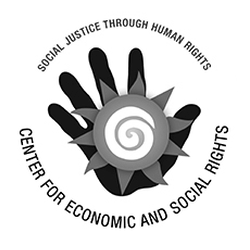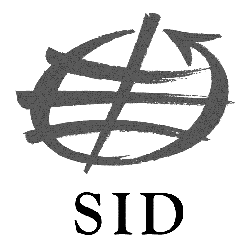By ETC Group
In April 2017, the University of Chicago convened a landmark conference during which the Chicago Boys quietly questioned their own long-held enthusiasm for concentrated markets. Since the 1970s, the Chicago School has opined – and policy-makers in the USA as well as regulators in many European countries have promulgated – the view that ‘bigger is better’ and that increased market concentration among global corporations should be judged not by market dominance but on the basis of efficiency and benefits to consumers. But, as spring winds blew through Chicago, even conservative economists were worried that mergers have got out of hand: in about 600 of the world’s 900 industrial sectors, market concentration has increased significantly in the last couple of decades while innovation in these sectors appears to be declining and successful start-ups are few and far between. [fn]The Economist (2017).[/fn]
In October 2016 during the annual meeting of the UN Committee on World Food Security (CFS), peasant organizations and their civil society partners urged governments to hold an emergency debate on the three mega-mergers facing the Agricultural Inputs Sector. The China National Chemical Corporation (ChemChina)’s offer to buy Syngenta (since approved) for US$ 43 billion had been quickly followed by the proposed marriage of Dow Chemical and DuPont (US$ 130 billion) and – just weeks before the CFS meeting – Monsanto agreed to be bought by Bayer for US$ 66 billion. If all three are allowed, and if only minor divestitures are demanded, the surviving three entities will together control at least 60 percent of global commercial seed sales and 71 percent of global pesticide sales. If divestitures are ordered, the most likely available buyer with deep pockets is BASF Corporation – already a ranking member of the six Gene Giants that have held sway over the nearly US$ 100 billion seed/pesticide market throughout this century. More recently, with Syngenta’s buyout pending, ChemChina announced that its merger with the Sinochem Group, another Chinese chemical giant producing agriculture inputs including fertilizers. This merger would create the world’s largest chemicals group with US$ 100 billion in yearly revenues. [fn]Weinland/Hornby (2017).[/fn]
However, not all of the concerns raised in the CFS meeting are in the first links of the food chain. As rumours of mergers got underway in the input sector, some of the world’s biggest food and beverage processors and retailers swung into action. In a rapid series of acquisitions, a Brazilian meat processor, JBS, took over competitors in Argentina, Australia, Canada, Mexico and the USA to become the world’s dominant meat packer; AB InBev arranged a US$ 120 billion hook up with SABMiller making the new entity, by far, the largest beer company in the world with more than one third of the market; Kraft and Heinz got together in a US$ 55 billion deal, making the new company the world’s fifth largest food processor; fast food giants Burger King and Tim Hortons tied the knot; and, most recently, the newly-married Kraft-Heinz proposed a US$ 150 billion ménage à trois with Unilever – one of the world’s most iconic food processing and consumer goods companies. Although Unilever spurned the suitor, Kraft-Heinz may still carry a torch and the move stirred merger talks involving Mondelez, Kellogg and just about every other food processor worth its salt and sugar. The real story behind these five deals is that they were orchestrated by four people – three Brazilian wheeler-dealers known as 3G Capital in cahoots with the world’s most famous investor, Warren Buffett of Berkshire Hathaway. Between them, if they have not yet won food’s Super Bowl – they are at least hoisting the burgers, pizza and beer. Over the past three decades, 3G Capital has invested US$ 250 billion backing mergers and acquisitions (M&A) in the global food and beverage market. [fn]Daneshku/Fontanella-Khan/Whipp (2017).[/fn]
The current boom in M&As is not limited to the global North. After all, for the first time, two of the world’s top 10 protein providers are Brazilian –JBS and Marfrig while China’s WH Group (following its purchase of Smithfield) is the world’s Number One hog producer. After taking over companies in Singapore and the Netherlands, another Chinese company, COFCO has become the world’s fourth largest grain trader; ChemChina is in line to be in the top three in seeds and pesticides; and following a series of M&As, Charoen Pokphand Group (CP) of Thailand has become a global food conglomerate. Meanwhile, India’s Mahindra and Mahindra now ranks sixth in global farm machinery sales and is making acquisitions in Europe.
It is encouraging that UNCTAD has taken the lead in mapping out a Model Law on Competition and is sparking a renewed debate on the threat of concentrated global markets. But the suspect M&A ‘efficiency’ theories from the 1970s are now being codified by the OECD. Over the past dozen years, the OECD has promoted guidelines on M&A regulatory procedures which are intended to streamline the approval (or occasional rejection) of cross-border takeovers. Interestingly, the OECD concedes that the regulatory trend line has been to approve ever-greater acquisitions and its guidelines urge countries that have not much evident ‘skin in the game’ to yield to the government’s hosting corporate headquarters. At the same time, the OECD concedes that the full importance of a merger is often not understood until several years after consummation; that mergers today are heavily driven by the need for technology control; and, that the direction new technologies might take is also generally unknowable. Strong reasons, one would think, for any country touched by the merger or its technologies, to intervene in the M&A review process.
There is no better opportunity to act on competition policy in the agribusiness sector than now. Not only do the three mega-mergers among agricultural input monoliths present a clear and present danger to food security, they depend upon the acquiescence of emerging agricultural markets in developing countries. Together, for example, Argentina, Brazil, China and India represent one third of all global pesticide sales – and that’s the third that is growing. If even a handful of countries in Africa, Asia or Latin America block a merger – or impose significant barriers – shareholder value could plummet and the deals would be called off by the companies themselves. And, unless the OECD is allowed to have its way, individual governments clearly have the right to say no. As Jennifer Clapp at the University of Waterloo has shown recently, although 3G Capital and Warren Buffett may be behind the big food and beverage processors purchase, BlackRock, the world’s largest asset manager, has anywhere from 5 to 7 percent of the shares in Syngenta, Bayer, DuPont and even BASF – the major actors in each mega-merger – and is looking to the future. [fn]Clapp (2017).[/fn]
But, it is less the mergers before us now than the mergers we are shortly to face that makes action urgent, as the arrival of Big Data genomics (so-called ‘digital DNA’) combines with the Big Data/robotics/artificial intelligence technologies being led by global farm machinery companies. This double strand of Big Data meets in the Cloud where only the biggest companies with the deepest pockets have the resources to bring together the current and historic market and climate data with the metre-by-metre data tabulating soils, seeds, fertilizers and pesticides – both the inputs and outputs. Already, John Deere, the world’s biggest farm machinery company by far, has joint ventures with each of the original six Gene Giants. John Deere, after all, has the ‘box’ in which farmers place their seeds, pesticides and fertilizers and it is also John Deere’s box that is back in the field at harvest time. If today’s mega-mergers are allowed, John Deere and the other three machinery companies that claim about half of the global farm machinery market will be free to make the ‘new technologies’/’food security’ argument that will force regulators and policy-makers to accept absolute consolidation among all inputs from seeds to satellites.
Governments accordingly have three policy options: first, they can block one or all of the current mergers within their own borders; second, they can call upon the CFS to take action on this issue when it meets in October 2017; and, third, the CFS and UNCTAD could work together to develop a UN Convention on Competition. Is such a provocative treaty really possible? Just as possible as everything else that’s happened to trade deals and politics over the past 12 months.
Clapp, Jennifer (2017): Bigger is not always better: Drivers and Implications of the Recent Agribusiness Megamergers. School of Environment, Resources and Sustainability, University of Waterloo. www.researchgate.net/publication/314206957_Bigger_is_Not_Always_Better_Drivers_and_Implications_of_the_Recent_Agribusiness_Megamergers
Daneshku, Scheherazade, Fontanella-Khan, James and Whipp, Lindsay (2017): 3G Capital to seek only friendly deals. In: Financial Times, 7 May 2017.
The Economist (2017): The University of Chicago worries about a lack of competition. 12 April 2017.
www.economist.com/news/business/21720657-its-economists-used-champion-big-firms-mood-has-shifted-university-chicago
Weinland, Don and Hornby, Lucy (2017): Chemchina and Sinochem plan merger. In: Financial Times, 8 May 2017.
www.ft.com/content/08a29238-2ed2-11e7-9555-23ef563ecf9a








